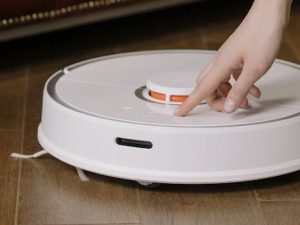How AI and Sensors Are Improving Workplace Safety
In the modern workplace, there are a variety of hazards and risks that employees may face on a daily basis. From slips, trips, and falls, to exposure to harmful substances, employers have a responsibility to ensure the safety and well-being of their workers. In recent years, technology such as AI and sensors have emerged as powerful tools in improving workplace safety. By utilizing these innovative solutions, companies can not only prevent accidents and injuries, but also create a more efficient and productive work environment.
The Role of AI and Sensors in Workplace Safety
AI, or artificial intelligence, refers to the simulation of human intelligence processes by computer systems. By utilizing machine learning and data analysis, AI can identify patterns and make autonomous decisions based on the information it receives. In terms of workplace safety, AI can play a crucial role in both identifying potential hazards and preventing accidents from occurring.
Sensors, on the other hand, are devices that can detect and respond to changes in the environment. They can collect data on various factors such as temperature, air quality, and motion, and provide real-time information to both workers and AI systems. When used in conjunction with AI, sensors become an integral part of a comprehensive workplace safety strategy.
Preventing Accidents with AI and Sensors
One of the main advantages of using AI and sensors in workplace safety is their ability to prevent accidents from happening. For example, sensors can be placed on equipment and machinery to detect any abnormalities or malfunctions. They can also monitor the condition of tools and equipment to ensure they are in proper working order, preventing potential accidents.
Similarly, AI systems can analyze data collected by sensors to identify any potential hazards in the workplace. For instance, if a sensor detects a rise in temperature in a particular area, AI systems can recognize this as a potential fire hazard and alert the appropriate authorities. This proactive approach allows for quicker response times and can prevent accidents from occurring in the first place.
Improving Safety Protocols with AI and Sensors
In addition to accident prevention, AI and sensors can also improve safety protocols in the workplace. By continuously collecting data and analyzing patterns, AI systems can identify areas of improvement in safety procedures. This can range from identifying high-risk areas that require additional safety measures to analyzing worker behavior and providing personalized safety training.
Sensors can also play a key role in monitoring worker health and well-being. For example, wearable sensors can track vital signs and alert workers and supervisors if there are any potential health concerns. This not only helps prevent accidents but also allows for early intervention in case of a medical emergency.
Creating a Culture of Safety
Another important aspect of workplace safety is creating a culture of safety within the organization. By utilizing AI and sensors, companies can foster a sense of responsibility and accountability among workers. When employees see that their employer is investing in their safety and well-being, they are more likely to prioritize safety in their day-to-day work.
In addition, AI and sensors can provide real-time feedback and safety reminders to workers. This can help keep safety at the forefront of their minds, reducing the likelihood of accidents and injuries. As a result, companies can create a safer and more positive work environment, leading to higher job satisfaction and productivity.
Conclusion
In conclusion, AI and sensors are transforming workplace safety by providing real-time data and insights to employers and workers. By utilizing these innovative solutions, companies can prevent accidents, improve safety protocols, and create a culture of safety within their organization. As technology continues to advance, it is essential for companies to embrace these tools and prioritize the well-being of their employees.









